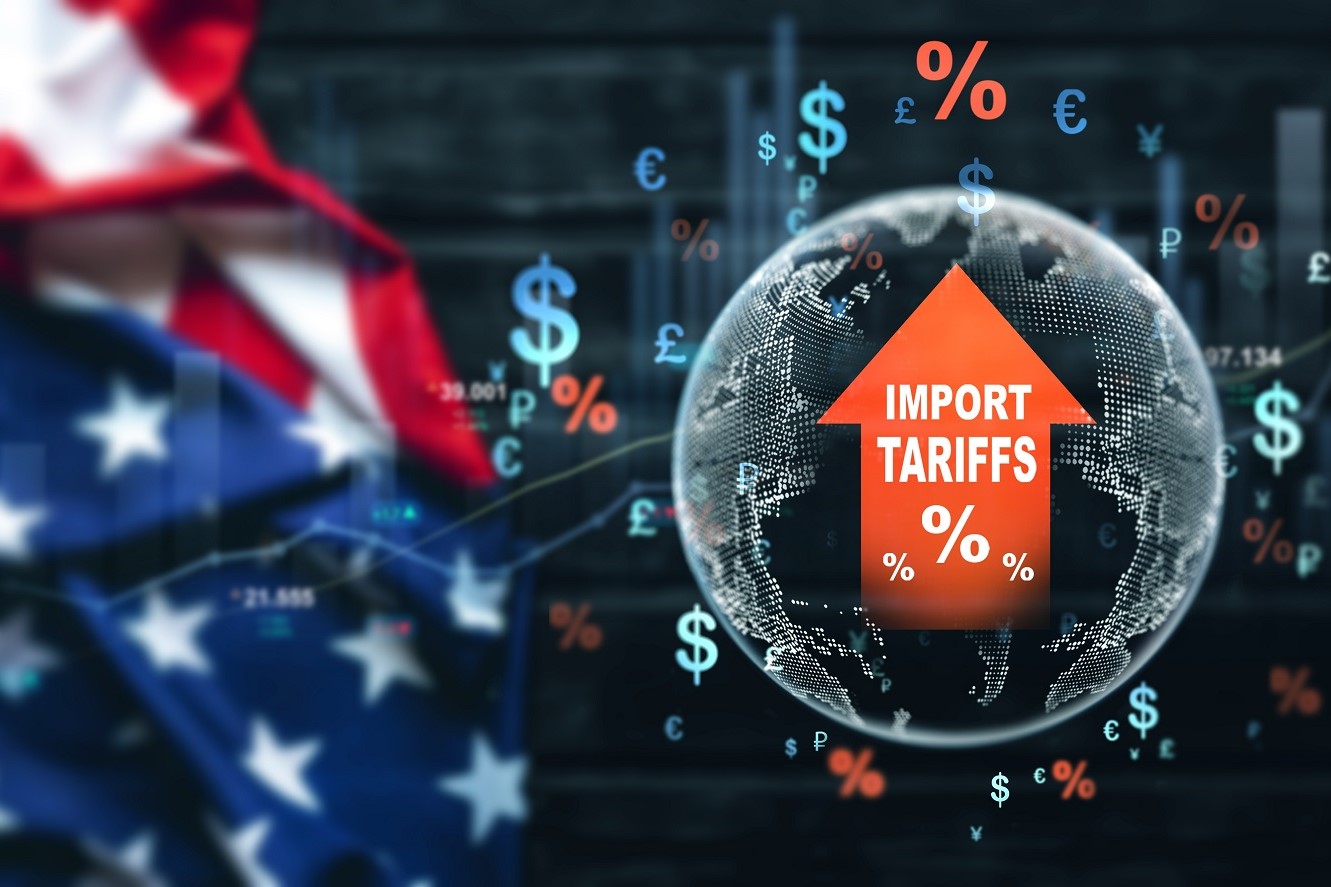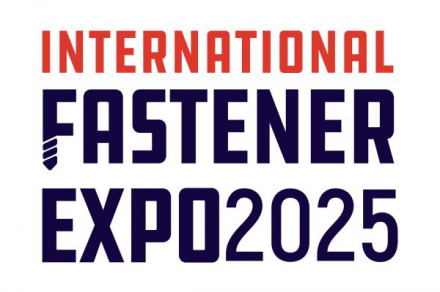News
Facing U.S. 25% Tariff, Taiwanese Suppliers Say Market Sentiment Turns Conservative


Add to my favorite
2025-04-09
Fasteners imported into the U.S. are currently subject to basic import duties depending on their respective tariff codes and the extra 25% tariff on steel & aluminum including their derivatives, which will create considerable cost pressures on suppliers and U.S. importers and consumers, causing problems of cost-sharing and transfer. A few Taiwanese export-oriented suppliers have expressed their views on the possible impact of the 25% tariff.
Anchor Fasteners G.M. Hector Chu said: “Taiwan still has an advantage when comparing the tariffs imposed by the U.S. on Taiwan and China. What is more worrisome is that the tariffs will reduce consumption in various industries, resulting in lower market demand and an economic downturn. Chinese manufacturers will inevitably shift their focus to the European and Asian markets, which will lead to tougher competition in these markets, adding to Taiwan's woes. At the end of the Covid pandemic, Taiwanese manufacturers had been in a recession for consecutive years, and they thought they had finally waited for a chance to recover, but then there comes an even more terrible black swan. It will take time to see if U.S. manufacturing can replace imports. The market was globalized in the past, but now it is going to be more localized. It is also difficult for export-oriented Taiwanese SMEs to set up factories in the U.S. The tariff is so high that it is difficult to share the full amount. In the end, most of the tariff will be passed on to customers and a small portion will be shared by manufacturers.
Chun Yu Domestic Sales Division Manager Denise Lee said: “After the confirmation of Trump's reciprocal tariffs on April 2, our domestic wire customers seem to have been affected, and a few of their customers have suspended or cancelled the orders, and only the parts with no inventory will continue to be arranged for shipment. Although the current duty rates are as we predicted (for example, the wire coil is subject to 25%, 731814.10 (small screws) is 6.2% plus 25%, and 731814.15 (bolts) is 8.6% plus 25%), importers do not want to bear so much tariffs and would like to ask exporters to share some of the costs. Some of our customers have also contacted us recently asking for pricing renegotiation.”
Chun Yu International Hardware Sales Division Manager Jas Huang said: “I think that the increase in tariffs by the US on various countries (especially China) will benefit Taiwanese manufacturers in the short term with the order transfer effect, but I’m still not optimistic about the long term economic outlook. Due to the constant changes in U.S. tariffs, the purchasing countries are now keeping a close eye on the market development and adopting a conservative policy, so the order volume cannot be increased.
Bi-Mirth Vice President Tom Shih said: “Since steel and aluminum products are covered by Section 232 of the Trade Expansion Act of 1962 and are exempted from reciprocal tariffs, fasteners entering the U.S. will only be subject to a basic import duty, plus a 25% tariff, depending on the item. In the case of coach screw, that's the basic 12.5% tax rate plus the 25% tax rate, which is 37.5% in total. Theoretically, it's true that taxes have increased, but in reality, almost every country is facing the same rate of tax increase, not just Taiwan. Currently, our shipments to U.S. customers are continuing as usual, and we have not been asked to suspend shipments or reduce orders. It should be noted that the actual tax rates for non-steel and aluminum products (such as assembly parts or rubber & plastic washers) may still depend on how the U.S. Customs will determine the rate at that time. Moreover, as the current tax measures change from one day to the next, we may not be able to see the extent of the impact on the industry until the end of April.”
Fang Sheng G. M. Jess Tsai said: “Previously, fasteners of some countries (such as Japan, S. Korea) exported to the U.S. will enjoy duty-free or lower tax rates under bilateral agreements, but if we look at the 25% tariff alone, because every country has been taxed, the advantage every country originally has is still there. The greater impact may be felt by local consumers in the U.S. It has been heard that U.S. importers will adopt a gradual price increase strategy, so only after the existing stock is emptied will consumers have to bear the 25% tariff directly on their subsequent purchases. Special attention should be paid to the ripple effect caused by the demand change among different industries. Although the impact on the fastener industry is relatively small due to the non-applicability of reciprocal tariffs, mid- to high-level industries such as machinery and other CNC machine tools are facing a big impact, and machinery requires the use of a lot of fasteners, so perhaps the real impact will slowly emerge later. Of course, the government's assistance in securing a lower tax rate and making the New Taiwan Dollar (NTD) more competitive will definitely minimize the impact. The actual impact of the tax measures should surface in H2 of the year. In addition, special attention should be paid to the concern about whether there are manufacturers who will try to circumvent the tax from the third country.”
TFTA Chairman Arthur Chiang said: “As for the tariff cost that some manufacturers may be forced to share at the request of their U.S. importers, TFTA's position is to discourage our company members from doing so, after all, the raw materials, utilities and other manufacturing costs of Taiwanese manufacturers are already much higher compared to other countries. Currently, if U.S. importers still have inventory, the extent of the impact may not be so obvious and the response to CPI may not be so fast, meaning the actual impact may be still a few months away. After the implementation of the 25% tariff, it is expected that the purchasing volume of U.S. customers may drop by 30% in the short term, but the demand will pick up after their inventory is emptied.
NFDA President Scott McDaniel said: “In the United States, tariffs have been used since the early days of our republic. Some countries have used tariffs to make their domestic production more cost competitive. I cannot say what is the correct or best path but understanding the history is important. My personal opinion is that free trade should prevail, and tariffs be minimized by all countries. This will allow those goods and materials that offer the lowest total cost of ownership the opportunity to drive value to consumers and other businesses. We cannot stop change any more than we can stop the sun from rising and setting every day. I encourage everyone to embrace the changes while looking for opportunities to help your suppliers and customers.”
Most of the respondents interviewed by Fastener World believe that the actual impact of the 25% tariff or even reciprocal tariffs may not be revealed until the second half of the year when the implementation of the tax measures becomes more specific and clear, so they will try to respond appropriately to upcoming changes while the public sentiment remains conservative.
美國
關稅
台灣扣件
成本
25%
對等關稅
USA
import tariff
tax
Taiwanese fastener
reciprocal tariff
screw
德國杜塞道夫線材展
扣件
國際展會
惠達雜誌
匯達實業
外銷媒合
廣告刊登
螺絲五金
五金工具
緊固件
台灣扣件展
印度新德里螺絲展
越南河內螺絲展
墨西哥瓜達拉哈拉螺絲展
美國拉斯維加斯螺絲暨機械設備展
波蘭克拉科夫螺絲展
義大利米蘭螺絲展
德國司徒加特螺絲展
wire Dusseldorf
FASTENER FAIR INDIA
FASTENER FAIR VIETNAM
FASTENER FAIR MEXICO
FASTENER POLAND
FASTENER FAIR ITALY
FASTENER FAIR GLOBAL
READ NEXT
2025-07-30

Subscribe







